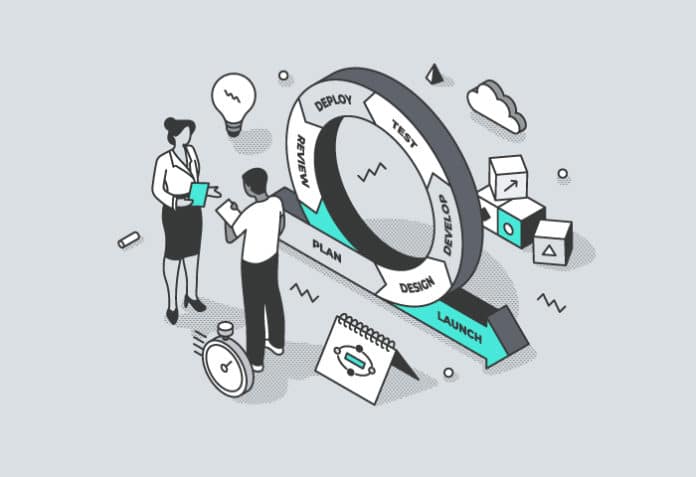Microsoft, Google, Amazon, IBM, and Oracle are today focusing on DevOps on the cloud. IT automation is what these big companies are offering enterprises. However, DevOps is evolving continuously. DevSecOps, AIOps and NoOps are set to be the next buzzwords.
Agile methodology and DevOps have become popular as developers and managers see the business value in delivering good quality software in time. To have flexible release cycles and deliver software with scalable and customisable features is the goal of every enterprise in the world. DevOps has smoothened the release process with CI/CD tools and pipelines being deployed on to the cloud. Polyglot microservices architecture blended with DevOps is helping enterprises to cut down the total cost of ownership. They now have capabilities to upgrade their technology stack with progressive Web apps and the latest UI frameworks. Overall, teams are performing with better efficiency and quality software modules are being developed.
Autonomous DevOps
Containers and DevOps go together with cloud native applications. Kubernetes and Docker are being used as containers and a new term called NoOps is trending now. Orchestration is an important feature of different containers. Container clusters are being created in developer environments to scale the application. There are new containers like Mesos, Swarm, Openshift Rancher and Nomad getting into the cloud native application space. NoOps helps in cutting down the coding cycles in order to monitor and manage the application. Defect fixing and hotfixes are different activities, which are part of NoOps. NoOps helps to improve the synergy between technical teams and business operations personnel. It helps in better monitoring, management, and process automation. NoOps infrastructure enables control of app deployment on the cloud. Enterprises derive benefits like better delivery, service resilience, faster time to market, good quality, and CI/CD automation.
DevSecOps
DevSecOps is another popular trend related to the security concerns addressed during development operations. Recent issues related to vulnerabilities (log4j), security breaches (Google, Facebook, Microsoft), and security attacks have increased the importance of DevSecOps in enterprises. A shift left approach emphasises the importance of security and quality to be addressed earlier in the software life cycle. Privacy and compliances like GDPR need to be considered at the architectural phase itself. This helps in cutting down costs and improving the speed of the software delivery. Auditing tools and security checklists are part of the DevOps tools and systems, which we call DevSecOps now.
AIOps
AI DevOps is now called AIOps. It is being predicted that AI applications will be managed by AIOps in future. Tools and software related to AIOps are being developed and available as first releases. AI/ML applications deployment and model updates can be handled by AIOps. This will play an important role in Industry 4.0 and data science. There is a school of thought that NoOps will be the end point for AIOps. AIOps consists of data set management, model training, model serving, metadata management, model updates, and service updates. Distributed training is enabled by AIOps, which gives the capabilities for hyper parameter optimisation, workflow management, and ‘what if’ analysis.
Microservices configuration management
DevOps and microservices are being implemented as standard deployment and architectural blueprints these days. Apps can be scaled at the module level. Microservices help in simplifying the fixing of defects and isolating problem areas. Microservices by design can be scaled by adding more instances of computing power. But when they are not implemented correctly, issues related to data security and management crop up.
Platform as a Product
Software as a Service and Platform as a Product are popular these days on the cloud. DevOps makes these a reality by accelerating the deployment and delivery of features to the platform. CI/CD pipelines help in visualising the app deployment, right from coding to live phases. Continuous delivery, integration and deployment are all part of DevOps. The future is about DevOps assembly lines simulating industry assembly lines.
DevOps is slowly graduating to DevSecOps and AIOps. NoOps for enterprises is the future. The need of the hour is to cut down the occurrence of security related attacks, incidents, and breaches. Data security and privacy is a high priority for enterprises, and these new technologies will all help with that.













































































